|
|
 |
|
|
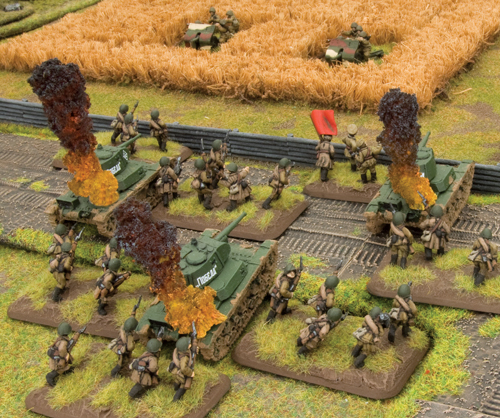 |
Poland Invaded!
Early War Soviet Infantry Forces
with Wayne Turner
On 17 September 1939 the Soviet Red Army invaded Poland. Earlier in the year they had concluded an agreement with the Germans after negotiations with the British, French and Romanians had fallen through to form an alliance to counter German aggression in Eastern Europe. Instead the Soviets approached the Germans and concluded an agreement known as the Molotov–Ribbentrop Pact.
|
As well as economic and trade co-operation, the pact included an
agreement of mutual non-aggression. The pack also made secret provisions
to divide the states of northern and eastern Europe into German and
Soviet spheres of influence. The Soviet sphere initially included Latvia, Estonia and Finland. Poland would be partitioned between Germany and the Soviet Union.
The Germans invaded Poland on 1 September. Despite some victories in the field, the Polish army was hard pressed and a retreat to the Romanian Bridgehead was ordered on 10 September and Polish units began to withdraw to the southeast corner of the country near the Romanian border to hold until French and British attacks in the west could put pressure on the Germans and some further aid could arrive through Romania.
|
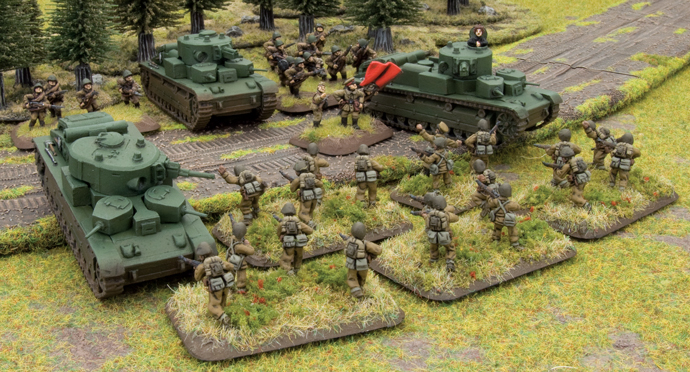 |
Meanwhile, the Germans had been urging the Soviets to attack from the
east and play their part in the Molotov–Ribbentrop Pact. The Soviets
delayed while they prepared their forces and waited for the Germans to
whittle the Poles down. They finally invaded on 17 September, using the
pretence of protecting Polish citizens from chaos caused by their
collapsed Government.
The Poles, focused on the German invasion, had striped their eastern border of most of it troops, so the border was only held by a thinned Polish Border Defence Corps under General Wilhelm Orlik-Rueckemann. They were hit by two Soviet armies, the Belorussian Front in the north and Ukrainian Front in the south, with somewhere between 500,000 and 1 million men. With no orders from their higher command, Polish troops all along the Soviet border fought a number of actions against the Red Army all along the front. As the Polish command refused to surrender and order all its troops to retreat south and cross into neutral Romania where they would make their way to France. Polish troops continued to fend off the Germans, while also clashing with the Soviets as they tried to sustain the corridor south to Romania.
|
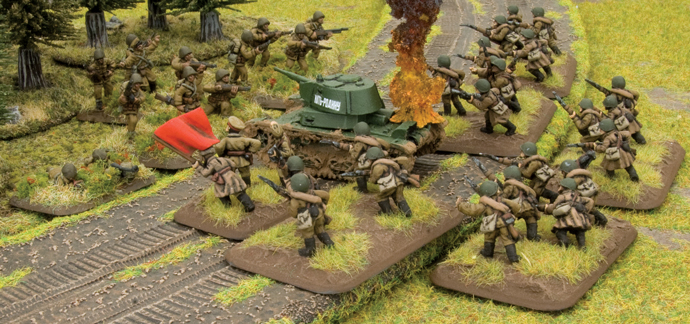 |
However, many Polish units were captured and the Polish army in the field had ceased to exist by 6 October 1939.
Notable battles between the Poles and Soviets:
Battle of Wilno (Vilnius)
18-19 September, 1939.
On 18 September, the commander of the Belarusian Front, Komandarm (Army Commander) Mikhail Kovalyov, ordered
the capture of Wilno. The 24th Cavalry Division and 22nd (T-26 tanks) and 25th (T-26 tanks) Tank Brigades advanced from the northeast and the 36th Cavalry Division and 6th Tank Brigade (BT tanks) advanced from the southeast.
On receiving reports of the approaching Soviet mobile forces, the Poles began to evacuate Wilno, with units to fall back to the Lithuanian border. The Poles tried to make contact with the Soviets to inform them they did not intend to fight for Wilno, but their envoy was shot at and he returned to the Polish lines.
|
 |
However, it was then decided to defend the city,
even thought a great number of Polish units has already withdrawn. The
Poles repulsed the first Red Army attack on the evening of 18 September.
However, the Soviets had established a foothold and continued to push
into the city. By the end of the day the Soviets had secured the
airfield and made several thrusts into the city.
By the next morning the Red Army tank units had been reinforced with infantry and cavalry. The Polish defenders
delayed
the Soviet advance by holding the bridges, but they could not hold the
Soviets and later that day the Polish defence collapsed and the Soviets
seized the city. |
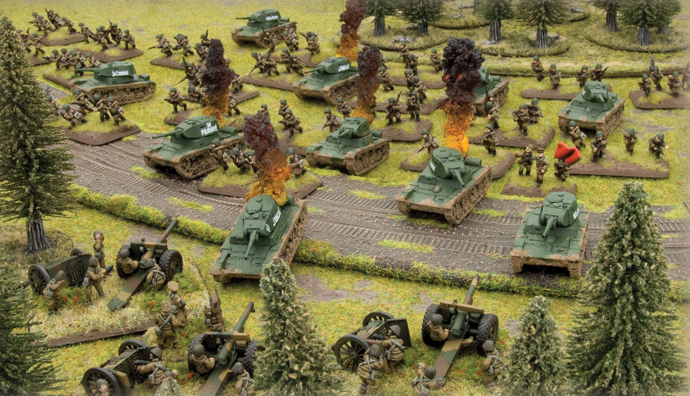 |
Battle of Szack
28 September, 1939.
Recognising that his small force of
Border troops were better off concentrated Polish General Wilhelm
Orlik-Rueckemann gathered up his units (around 9000 men) around Polesie
with the possibility of withdrawing west to join other Polish forces
at Kowel. To avoid German forces Orlik-Rueckemann’s group ended up in
the area between the Germans and Soviets north of Włodawa. Here on 27
September the General decided to engage the Soviets to raise Polish
morale.
On the morning of 28 September the Poles were in two
columns. The northern column entered the forest near the village of
Mielniki, and the southern column deployed in the forest east of Szack
(now Shatsk). Szack was occupied by Red Army infantry and tanks.
Orlik-Rueckemann ordered both his columns to form a defensive line along
the edge of the forest. Deploying in view provoked the Soviets into an
attack.
|
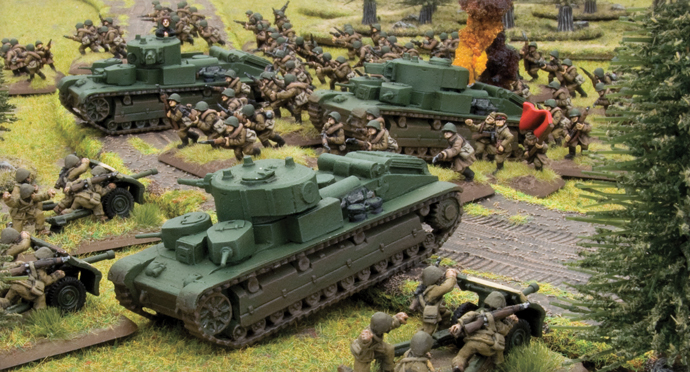 |
At 0800 hours a Soviet tank unit (T-26 tanks, probably
the tank battalion of the 52nd Rifle Division) began an assault on the
Polish positions. The Poles waited until the T-26 tanks had closed to
500 metres and opened up with their Bofors 37mm wz. 36 anti-tank guns.
They were soon joined by the infantry and the 75mm wz. 1897 guns of the
artillery. The lightly armoured T-26 tanks couldn’t resist the onslaught
and soon all the Soviet tanks were disabled or destroyed. Then the
Poles attacked Szack with their infantry battalion. The Soviet infantry were
taken by surprise and after a short hand-to-hand fight the Soviet
forces were routed. Some infantry managed to retreat, but left behind
all their artillery and nine T-26 tanks.
At 1400 hours Soviet
reserve units appeared in the area and Orlik-Rueckemann decided to
withdraw his troops back into the forest. Most of the Polish force
escaped to cross the Bug River and join forces for the Battle of
Wytyczno. |
 |
Battle of Wytyczno
1 October, 1939.
After the battle of Szack on 28
September, General Orlik-Rueckemann crossed his forces over the Bug
River on 30 September. After crossing the Włodawa-Trawniki road, shortly
after 0100 hours on 1 October, the Polish border guards were attacked
by a tank unit of the Soviet 45th Rifle Division. Polish Bofors 37mm wz.
36 guns once again proved their worth and forced the tanks to withdraw
after they lost four T-26 tanks.
Just after down the 45th Rifle
Division attacked again, this time with the majority of division’s
units. The Soviets, expecting the Poles to be easily routed, started a
frontal assault on Polish positions in the village of Wytyczno. However,
the Polish placed artillery in forest behind the village. The artillery
support allowed the Poles to hold their positions. Casualties on both
sides mounted as the struggle for the village continued. By 0900 hours
the Polish artillery only had limited ammunition left. |
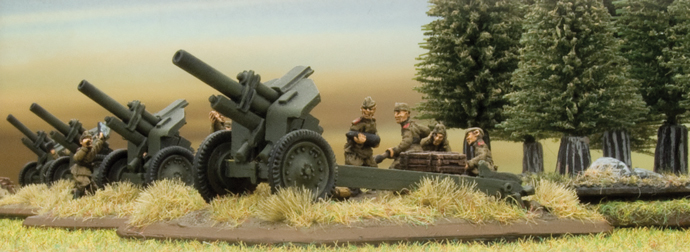 |
However,
the Polish will to fight had begun to waver, with one Battalion failing
to carry out an order to attack the Soviet left flank. The soldiers were
simply too tired after days and miles of hard marching.
The 45th
Rifle Division were slowly wearing down the Polish defences and at 1030
hours the Polish commander gathered to discuss the situation. It was
decided that the only option for the survival of the men was to withdraw
and break up into smaller detachments and try to break through to the
units of Independent Operational Group Polesie fighting the Germans
nearby. By mid-day the Polish units had successfully withdrawn to the
forest. Most were able to join Group Polesie where they fought for
another five days and avoided Soviet captivity.
|
|
The Soviet Strelkovy Batalon in Early War
You can now field a Early War Strelkovy Batalon in Early War from Rising Sun.
The old PDF Poland Invaded! Intelligence Briefing has been replaced by the forces in Rising Sun. As I mentioned earlier many of the ideas in the Poland Invaded! PDF were still under development, and you can see from Rising Sun some of the rules have changed.
I hope you enjoy the new book.
~ Wayne.
|
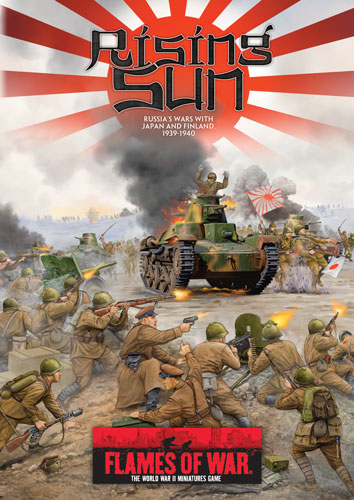
|
Last Updated On Tuesday, July 23, 2013 by Wayne at Battlefront
|
|
|